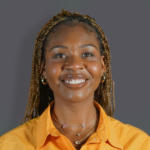Use Openers and Closers to Support Authentic Connection

“True belonging only happens when we present our authentic, imperfect selves to the world. Our sense of belonging can never be greater than our level of self-acceptance.”
– Brene Brown

INTRO
Meetings that start and end with purpose don’t just feel better—they produce better outcomes. Openers and closers create a foundation of trust, engagement, and alignment, which leads to more innovative ideas, stronger relationships, and actionable results. When participants leave a meeting feeling inspired and connected, they carry that energy into their work, their relationships, and even their personal lives. It’s a ripple effect that starts with a simple but powerful choice: to invest in the moments that prime people to think differently, share openly, and connect authentically.
OBJECTIVES
- Build a habit of using openers and closers when gathering with purpose
- Showcase how openers can foster connections, creativity, and purpose in meetings
- Provide examples to enhance engagement and collaboration
Openers and closers are strategically designed activities that bookend meetings to support authentic connections, creative thinking, and deeper collaboration. Openers are more than simple icebreakers; they set the tone, bring the meeting’s purpose to life, and prime participants for engagement by inspiring vulnerability and creative energy. Similarly, closers provide a purposeful end to the gathering, reinforcing learning, strengthening emotional resonance, and ensuring a sense of closure. Both openers and closers allow participants to connect on a human level and can lead to better collaboration and more effective outcomes.
When designed thoughtfully, openers activate mental states that align with the meeting’s goals. Below are some examples of openers we use when working with school leaders.
Openers for Mood Elevation
Positive, engaging openers improve mood and reduce stress, which can enhance cognitive performance. Research shows that people are more innovative and open to new ideas when they feel positive emotions.

My favorite opener is: Share a transformational moment from your career that connects to your why and influences how you work today.
This one is my favorite because we get to know each other on a deeper level. With only an hour a month to connect in Counterpart meetings it’s great to hear a story that allows me to see a different side and hear their passion. It reminds me of why I do the work I do and why it’s so important.
- Positive Thing. Share a positive thing that is going on and you are going ahead with
- Transformational Moment. Share a transformational moment from your career that connects to your why and influences how you work today.
- Natural or Cultivated Talent. What is a natural or cultivated talent you have that helps you thrive in your job?
- Professional Development Experience. Share a professional development or network experience that has resonated with you. What made it significant?
- Impactful Book. What book had the most significant impact on your life?
- Share a Win. What is the last thing you completed that you are proud of?
- Rose, Bud, Thorn. What is one good thing that happened today? What is one challenge from your day? What are you looking forward to?
- What Cheers You Up? What’s something on your desk, a nearby wall, or out the window that cheers you up during the day?
Openers for Building Healthy Relationships
Activities that encourage participants to share something personal or non-work-related can deepen interpersonal bonds. Teams perform better when members feel safe to express themselves without fear of judgment. Vulnerability-building openers—like sharing personal experiences or challenges—help create this safe environment early in the meeting.
- Sense of Belonging. Think of a time when you felt like you belonged or were accepted. When you think about that time, what did you see? What were you doing? What did you experience? Give me as much detail as you can.
- What’s New? Think of something that is new with you that you want to share.
- Compliment Circle. Have everyone go around in a circle and give a compliment to the person in next to them
- Recommendations. What is your #1 recommendation to someone visiting your hometown or your current city?
- Family Opinions. What would your family and friends say you were good at?
- Show or Book Bingeing. What show are you currently binge-watching? Or what was the last book you read or are currently reading?
- Nickname. What is a nickname you had as a child (or maybe still have?) What is the story behind how you got that nickname?
- Risk. What’s one of the biggest risks you’ve taken in your career or life? How do you feel about having taken it?
- Advice. What advice has made a big difference in your life?

My favorite opener is: What is your #1 recommendation to someone visiting your hometown or your current city?
I love this opener because of how genuinely excited folks get to share their recommendations. Often with an opener, there is an awkward pause where folks try not to answer first, but with this opener everyone is jumping in with their favorite places, excitedly admiring images of amazing food, and planning road trips to try new places. The energy that comes into the room following this opener can carry the rest of the meeting. Although unprompted, I also sometimes learn things about a person’s personal journey and what feels like home to them.
Openers for Transitioning and Managing Stress
Openers can help participants mentally transition from previous tasks into the present meeting. Reflective or grounding activities, such as deep breathing or gratitude exercises, reduce stress and improve focus, especially in high-pressure environments.
- Feelings Chart. Choose the image that best describes how you are feeling. (be sure to google a feelings chart to present)
- Restore You. List 3-5 things that can help when you are feeling overwhelmed in the moment and list 3-5 things you can do to help restore your energy at the end of the day.
- Push Forward or Take a Break? How do you know the difference between that edge of discomfort/frustration where you need to push yourself forward vs when you are on the edge of burn out or “snapping” so you should instead, take a break?
- Two Word Check-in. We all have the human need to see others and to be seen. The realness connects us. Today we’re going to go around and share out two words that describe how you’re feeling today.
- Wish Feelings. State the feelings you wish for the person to your left to have during this meeting.
Openers to Promote Cognitive Flexibility
Openers that involve creative or abstract thinking, such as metaphorical exercises or storytelling, stimulate cognitive flexibility, which is the ability to switch between ideas or perspectives. This is crucial for brainstorming, problem-solving, or tackling complex challenges.

My favorite opener is: What is your favorite villain origin story? Or which villain’s actions do you believe are most justified?
This is one of my favorite activities because it’s lighthearted, engaging, and sparks conversations about movies and shows people love. However, its real value shines when we connect it to the purpose of the meeting—especially when discussing “difficult” students or staff members. By framing the reason behind this opener (ideally after participants have shared their responses), it encourages greater empathy and reflection. Participants often become more open to exploring how they can better support individuals who challenge their leadership or vision.
- News Headline. What would the headline be for your school in 10 years time?
- Big Changes. If you could make any one big change in your school and everyone was on board what would it be?
- Mask Off. What is your favorite villain origin story? Or which villain’s actions do you believe are most justified?
- Something New. What’s something new you want to try this year?
- PB&J. How do you make your peanut butter and jelly sandwiches?
- What Invention Do You Wish Existed? What problem or challenge in your life do you wish there was an invention or innovation to solve? What would this invention do, how would it make your life easier, and how would you use it?
- Elementary School. What part of elementary school do you wish you could incorporate into your adult life?
- Plot Twist. If someone was reading your autobiography and found the “plot twist”, what part of your story would that be? Choose a plot twist you are comfortable sharing, life stories usually have a few to choose from.
TIPS
While openers and closers are powerful tools, they require thoughtful facilitation to truly shine. Here’s how facilitators can maximize their impact:
Be Intentional: Choose openers and closers that align with the meeting’s purpose and the group’s dynamics. A team brainstorming session might call for a creativity-boosting opener, while a strategic planning meeting might benefit from a reflective closing activity.
Model Vulnerability: Facilitation is about leading by example. When facilitators share authentically, they signal to participants that it’s safe to do the same.
Adapt to the Room: Read the energy and adjust as needed. If the group feels tense or disengaged, a playful opener might help break the tension. If the group feels scattered, a grounding closer can refocus everyone.
Closers: The Power of Reflection and Closure
While openers get people into the right mindset, closers ensure the meeting ends with purpose and connection. A strong closer ties everything together and leaves participants with clarity and motivation.
Reinforcing Key Takeaways and Encouraging Commitment
Reflective closers help consolidate learning. By summarizing insights or asking participants to articulate their takeaways, facilitators strengthen memory encoding, making the meeting’s content more likely to stick. Closers that prompt participants to articulate their next steps or commitments help bridge the gap between intention and action.
- What learning will you take with you from this meeting?
- What’s a new idea or thought from this meeting that you would like to continue thinking about?
- How would you have made this meeting better?
Emotional Resonance
Psychology tells us that ending on a positive or meaningful note increases satisfaction. Ending with gratitude, reflection, or an inspiring message leaves participants with a sense of purpose and accomplishment.
- Lean on Me. Describe the characteristics of a person you lean on for support. How can you find this within your school community?
Shared Purpose
Activities that encourage collective reflection (e.g., “What did we accomplish today?”) create a sense of shared purpose and alignment, which increases motivation and accountability. Ending with a strong closer helps participants leave with momentum, increasing the likelihood that they will carry the meeting’s energy into their next tasks.






Responses